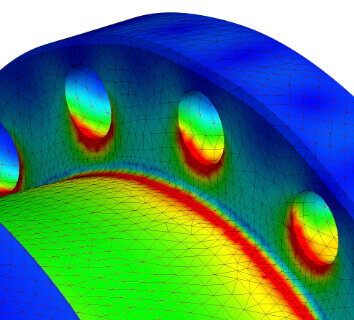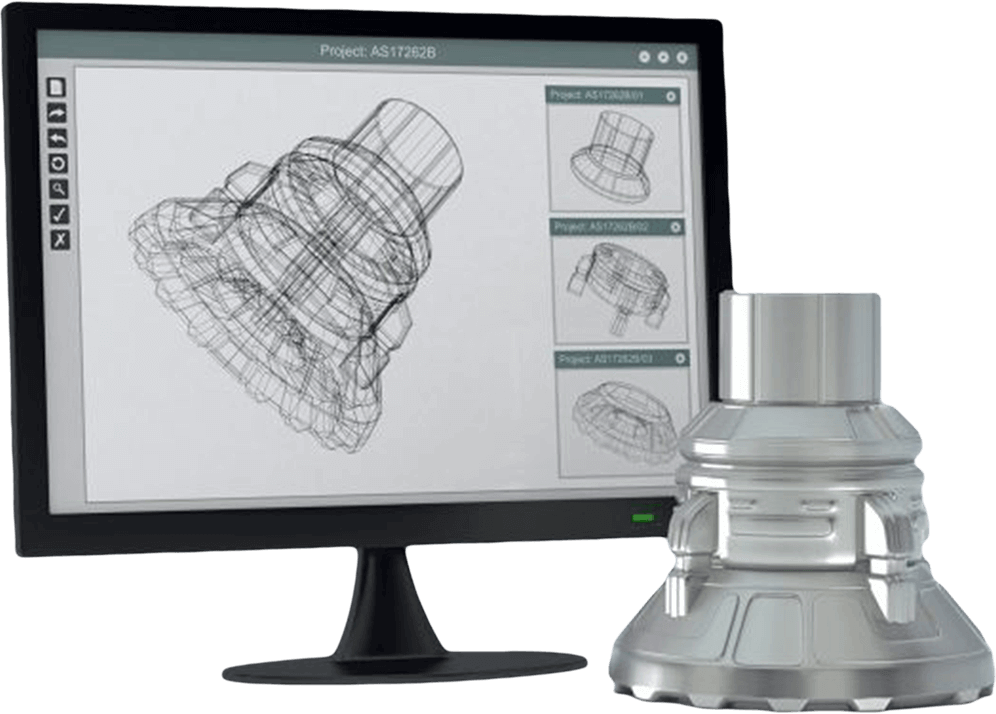Design for Manufacturing: Injection Molding
Get a Quote
40+ years of experience

ITAR Registered

ISO9001: 2015 Certified
Design for Manufacturability (DFM) is a set of guidelines and principles that focus on optimizing the design of products or parts to make them easier and more cost-effective to manufacture. When it comes to injection-molded parts, DFM considerations are crucial to ensure the efficient production of high-quality components.

Here are some DFM tips and rules for designing injection-molded parts:
- Material Selection:
- Choose the right thermoplastic material based on your specific requirements, including strength, temperature resistance, chemical resistance, and cost.
- Consider the material’s shrinkage rate during cooling to avoid issues like warping and dimensional inaccuracies.
- Part Geometry:
- Keep part geometries as simple as possible. Complex shapes can increase mold and production costs.
- Use draft angles (typically 1-2 degrees) on vertical faces to facilitate easy ejection from the mold.
- Minimize the number of undercuts and avoid sharp corners to prevent molding challenges.
- Wall Thickness:
- Maintain uniform wall thickness throughout the part to ensure consistent cooling and minimize the risk of defects like warping and sink marks.
- Avoid thick sections, as they can lead to longer cooling times and increased part costs.
- Ribs and Gussets:
- Reinforce areas that require additional strength with ribs and gussets instead of increasing wall thickness.
- Ensure proper spacing and design to prevent sink marks and maintain even material flow.
- Bosses and Standoffs:
- Design bosses (projections) and standoffs (posts) with appropriate dimensions and drafts to facilitate easy mold release.
- Ensure that bosses have adequate thickness and support to withstand assembly stresses.
- Gating and Runner System:
- Position gate locations strategically to minimize part distortion and cosmetic defects.
- Design the runner system for efficient material flow and cooling. Use a cold runner system if feasible to reduce material wastage.
- Ejector Pins and Knockout Pins:
- Place ejector pins and knockout pins carefully to avoid part damage during ejection.
- Ensure that they do not interfere with critical part features.
- Surface Finish:
- Specify the required surface finish on the part, as it can impact tooling and mold costs.
- Understand the impact of texture and grain on the part’s appearance and functionality.
- Tolerances:
- Specify appropriate tolerances for critical dimensions to maintain part functionality while minimizing manufacturing costs.
- Be aware that tight tolerances can increase tooling and production costs.
- Assembly Considerations:
- Design parts with features like snap fits, living hinges, and self-locking mechanisms to reduce the need for additional assembly components.
- Ensure that parts align correctly during assembly.
- Mold Design Collaboration:
- Collaborate closely with mold designers and manufacturers to ensure that the injection mold design complements the part design for optimal production.
- Prototyping and Testing:
- Prototype parts to test for manufacturability and functionality before committing to mass production.
- Use simulation software to analyze and optimize the injection molding process.
- Material Handling and Storage:
- Consider the ease of material handling, storage, and transportation of the finished parts.
- Sustainability:
- Explore ways to reduce material waste and energy consumption during the molding process, as well as to facilitate recycling.
Things to Avoid:
- Sharp Corners and Edges:
- Avoid sharp corners and edges, which can lead to stress concentrations and mold wear. Use fillets and radii to distribute stress evenly.
- Complex Undercuts:
- Minimize or eliminate complex undercuts that require special mold designs or side actions, as they can significantly increase tooling costs.
- Overly Tight Tolerances:
- Avoid specifying tighter tolerances than necessary, as they can lead to increased production costs and potentially limit material selection.
- Excessive Features:
- Limit the number of features, such as intricate texturing, knurling, or engraving, that can complicate the mold and increase production time.
- Thin and Thick Sections:
- Avoid sudden transitions from thin to thick sections, as these can lead to uneven cooling and potential defects.
- Inadequate Draft Angles:
- Ensure that adequate draft angles are provided to facilitate part ejection from the mold. Inadequate draft angles can result in sticking.
- Poor Mold Alignment:
- Design parts with features that allow for proper mold alignment to prevent parting-line mismatch.
- Complex Parting Lines:
- Minimize the complexity of parting lines, as overly intricate parting lines can increase mold design and maintenance costs.
- Inadequate Venting:
- Ensure that vents are included in the mold design to allow air and gas to escape during injection molding, preventing defects like voids and burns.
- Ignoring Material Properties:
- Understand the material’s flow characteristics and limitations to avoid issues like short shots or sink marks.
Effective communication with mold designers and manufacturers, along with prototyping and testing, can help identify and resolve potential issues in the design phase. Collaboration with experienced injection molding experts is crucial to achieving the best results in DFM for injection-molded parts.
By following these DFM tips and rules for injection-molded parts, you can enhance the manufacturability of your designs, reduce production costs, minimize defects, and improve the overall quality of the final components. Collaboration with experienced injection molding experts and mold designers is essential to achieving the best results.
